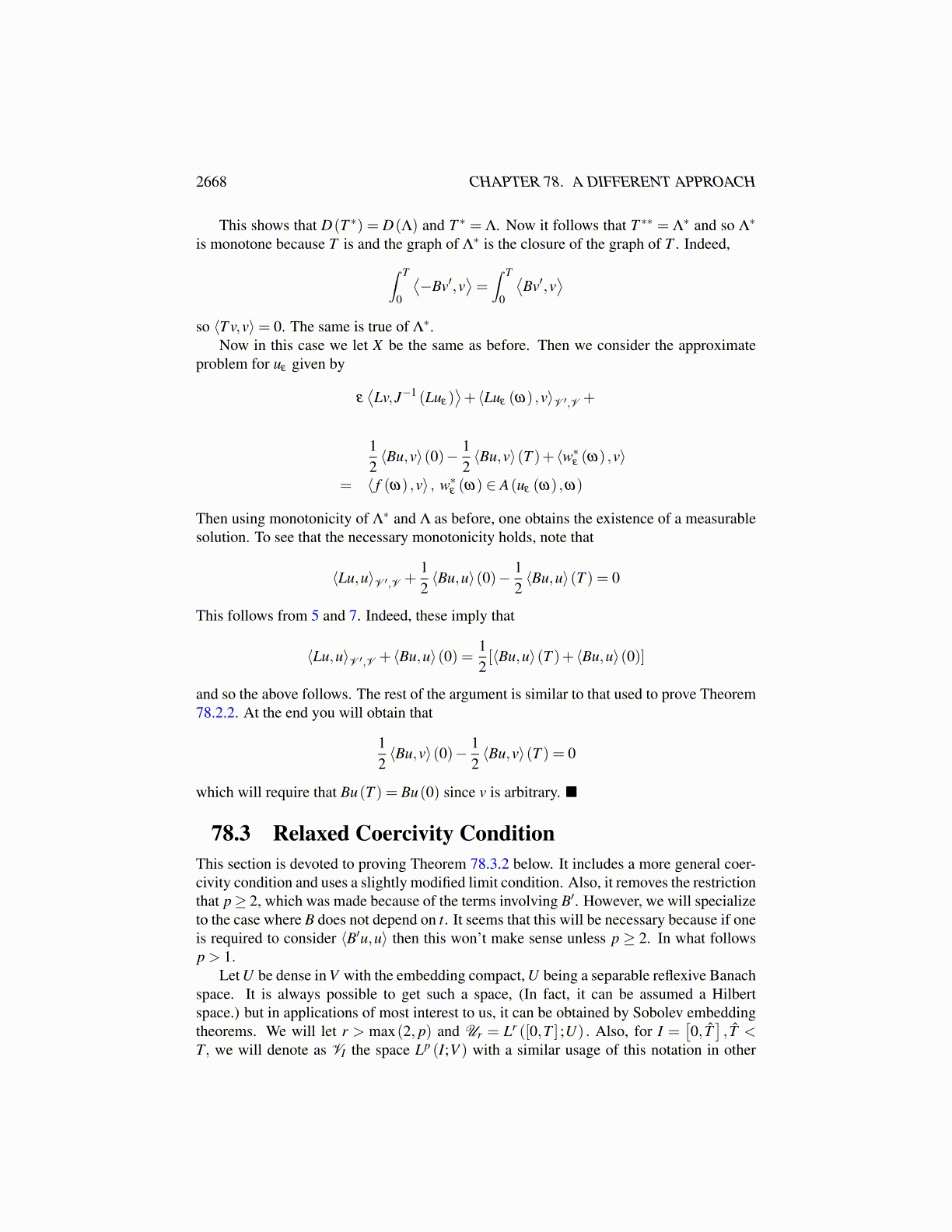
2668 CHAPTER 78. A DIFFERENT APPROACH
In particular, this holds if v = u which shows that
limε→0⟨K (uε)+w∗ε ,uε −u⟩= 0.
It follows then that for v ∈ X ,
⟨ξ +Ku,u− v⟩ = limε→0⟨w∗ε +Kuε ,u− v⟩
= limε→0
[⟨w∗ε +Kuε ,u−uε⟩+ ⟨w∗ε +Kuε ,uε − v⟩]
≥ lim infε→0⟨w∗ε +Kuε ,uε − v⟩ ≥ ⟨w∗ (v) ,u− v⟩
Since v is arbitrary, separation theorems imply that
ξ (ω)+Ku(ω)≡ w∗ (ω)+Ku(ω) ∈ A(u(ω) ,ω)+Ku(ω) .
Then passing to the limit in 78.2.14, we have
Ku(ω)+w∗ (ω) = f (ω)+g(ω) in X ′,
w∗ (ω) ∈ A(u(ω) ,ω) , Bu(ω)(0) = Bu0 (ω) (78.2.18)
and Lu,w∗,u are all measurable into the appropriate spaces. This implies for each v ∈ X ,∫ T
0⟨Lu,v⟩+ ⟨Bu,v⟩(0)+
∫ T
0⟨w∗,v⟩=
∫ T
0⟨ f ,v⟩+ ⟨Bv(0) ,u0⟩
In particular, letting v = u,∫ T
0⟨Lu,u⟩+ ⟨Bu,u⟩(0)+
∫ T
0⟨w∗,u⟩ =
∫ T
0⟨ f ,v⟩+ ⟨Bu(0) ,u0⟩
=∫ T
0⟨ f ,v⟩+ ⟨Bu0,u0⟩
Thanks to 78.2.18, this shows that ⟨Bu,u⟩(0) = ⟨Bu0,u0⟩. Also it follows from Theorem78.1.8.
This has proved the following theorem.
Theorem 78.2.2 Let p≥ 2 and let A satisfy 78.1.1-78.1.1 and let f be measurable into V ′
and let u0 be measurable into W. Then there exists a solution to 78.2.18 such that Lu,w∗,uare all measurable. We also have for u this solution that for fixed ω,⟨Bu0,u0⟩= ⟨Bu,u⟩(0).
We also have the following corollary which gives measurable solutions to periodicproblems. Of course there is no uniqueness for such periodic problems so this is anotherplace where our theory is applicable. In this corollary, we assume for the sake of simplic-ity that B(t) = B a constant. Thus, it is not necessary to assume p ≥ 2 in the followingcorollary.